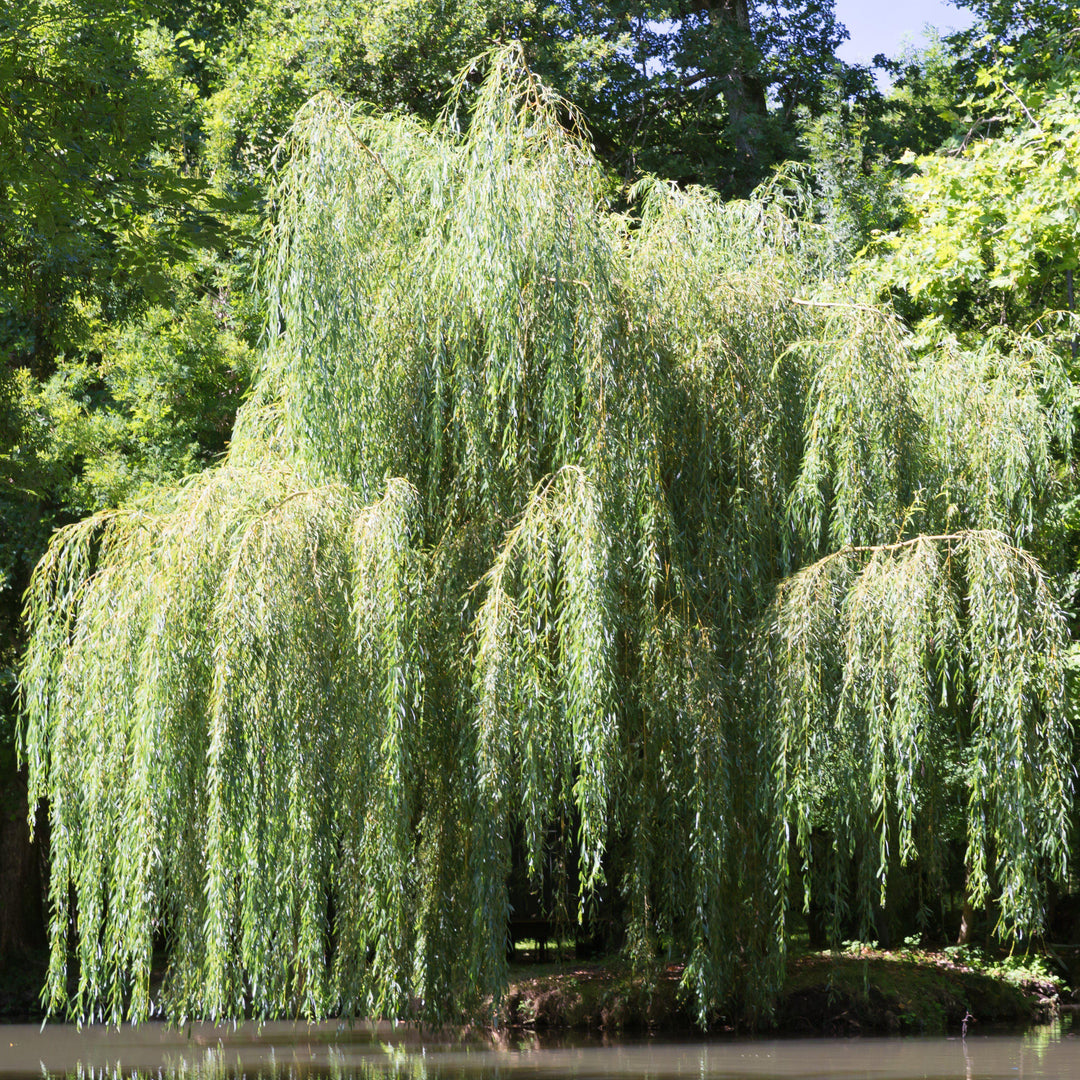
Weeping Willow
Salix babylonica
- En stock
- Pedido pendiente, envío pronto
- Cultivados localmente
- Garantizado Manejado con cuidado
-
The Weeping Willow is a deciduous tree that can reach heights of 30 to 50 feet (9 to 15 meters) with a spread of 35 to 50 feet (11 to 15 meters). It has a rounded crown and a weeping growth habit, with branches that hang down towards the ground.
-
Leaves: The leaves of the Weeping Willow are long and narrow, with a pointed tip. They are light green in color and have a fine, serrated edge. The leaves provide a delicate and airy appearance to the tree.
-
Growth Rate: Weeping Willows are known for their fast growth rate. Under ideal conditions, they can grow up to 3 to 8 feet (0.9 to 2.4 meters) per year. This rapid growth makes them a popular choice for creating quick shade or privacy.
|
Type: |
Tree |
|
Origins: |
China |
|
Height: |
30' - 50' |
|
Spread: |
30' - 50' |
|
Spacing: |
40' |
|
USDA Hardiness Zone: |
6 - 8 |
|
Culture: |
Full Sun, Part Sun |
|
Bloom Color: |
Green |
|
Season of Interest: |
Fall, Year-Round |
MAINTENANCE NEEDS: Medium maintenance. Avoid dry soils. Susceptible to various diseases, including blights, powdery mildew, leaf spots and cankers. Possible pests include aphids, scale, borers, and lacebugs. Prune as needed in late winter to early spring. The wood is weak due to fast growing and may split or crack. Leaf and stem litter can be an issue.
LANDSCAPE USES: Group Plantings or Specimen Tree, Naturalized Areas, Woodland Gardens, and Shade Tree
COMPANION PLANTS: 'Johanna' Azalea, Black Mondo Grass, Southgate Divine Rhododendron
IMAGE: © William Crochot / Wikimedia Commons / CC BY-SA 4.0, Salix babylonica (Saule pleureur) - 20150810 14h42 (11052), CC BY-SA 4.0
¡¡¡Aprovecha Un Servicio De Entrega Con El Que Puedes Contar!!! Ofrecemos una amplia variedad de camiones para sus necesidades de entrega. Servicio de entrega puntual y sin complicaciones, cuando lo necesite y donde lo necesite. ¡Ya sea en su jardín o directamente en el lugar de trabajo!
Las áreas de envío locales incluyen todo Maryland, Virginia del Norte, Pensilvania y Washington DC; también se pueden organizar áreas que no figuran en la lista.

